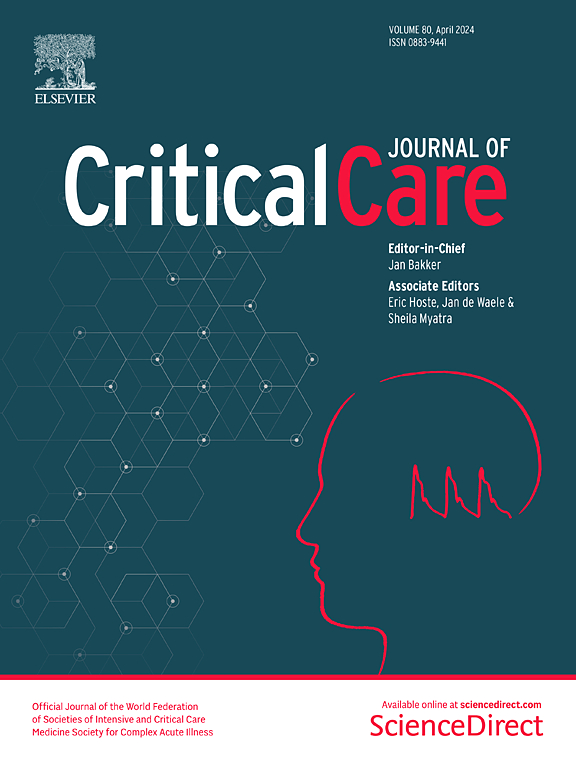Can we predict the future of respiratory failure prediction?
IF 8.8
1区 医学
Q1 CRITICAL CARE MEDICINE
引用次数: 0
Abstract
Mortality in patients with acute respiratory failure remains high. Predicting progression of acute respiratory failure may be critical to improving patient outcomes. Machine learning, a subset of artificial intelligence is a rapidly expanding area, which is being integrated into several areas of clinical medicine. This manuscript will address the knowledge gap in predicting the onset and progression of respiratory failure, provide a review of existing prognostic strategies, and provide a clinical perspective on the implementation and future integration of machine learning into clinical care. Existing strategies for predicting respiratory failure, such as prediction scores and biomarkers, offer both strengths and limitations. While these tools provide some prognostic value, machine learning presents a promising, data-driven approach to prognostication in the intensive care unit. Machine learning has already shown success in various areas of clinical medicine, although relatively few algorithms target respiratory failure prediction specifically. As machine learning grows in the context of respiratory failure, outcomes such as the need for invasive mechanical ventilation and escalation of respiratory support (e.g. non-invasive ventilation) have been identified as key targets. However, the development and implementation of machine learning models in clinical care involves complex challenges. Future success will depend on rigorous model validation, clinician collaboration, thoughtful trial design, and the application of implementation science to ensure integration into clinical care. Machine learning holds promise for optimizing treatment strategies and potentially improving outcomes in respiratory failure. However, further research and development are necessary to fully realize its potential in clinical practice.我们能预测呼吸衰竭预测的未来吗?
急性呼吸衰竭患者的死亡率仍然很高。预测急性呼吸衰竭的进展可能是改善患者预后的关键。机器学习是人工智能的一个子集,是一个快速发展的领域,正在被整合到临床医学的几个领域。本文将解决预测呼吸衰竭发生和进展方面的知识差距,提供现有预后策略的回顾,并提供关于机器学习在临床护理中的实施和未来整合的临床观点。预测呼吸衰竭的现有策略,如预测评分和生物标志物,既有优势也有局限性。虽然这些工具提供了一些预测价值,但机器学习为重症监护病房的预测提供了一种有前途的、数据驱动的方法。机器学习已经在临床医学的各个领域取得了成功,尽管相对较少的算法专门针对呼吸衰竭的预测。随着机器学习在呼吸衰竭背景下的发展,诸如需要有创机械通气和呼吸支持升级(例如无创通气)等结果已被确定为关键目标。然而,在临床护理中开发和实施机器学习模型涉及复杂的挑战。未来的成功将取决于严格的模型验证,临床医生的合作,周到的试验设计,以及实施科学的应用,以确保整合到临床护理中。机器学习有望优化治疗策略,并有可能改善呼吸衰竭的结果。然而,为了充分发挥其在临床实践中的潜力,还需要进一步的研究和开发。
本文章由计算机程序翻译,如有差异,请以英文原文为准。
求助全文
约1分钟内获得全文
求助全文
来源期刊

Critical Care
医学-危重病医学
CiteScore
20.60
自引率
3.30%
发文量
348
审稿时长
1.5 months
期刊介绍:
Critical Care is an esteemed international medical journal that undergoes a rigorous peer-review process to maintain its high quality standards. Its primary objective is to enhance the healthcare services offered to critically ill patients. To achieve this, the journal focuses on gathering, exchanging, disseminating, and endorsing evidence-based information that is highly relevant to intensivists. By doing so, Critical Care seeks to provide a thorough and inclusive examination of the intensive care field.
 求助内容:
求助内容: 应助结果提醒方式:
应助结果提醒方式:


